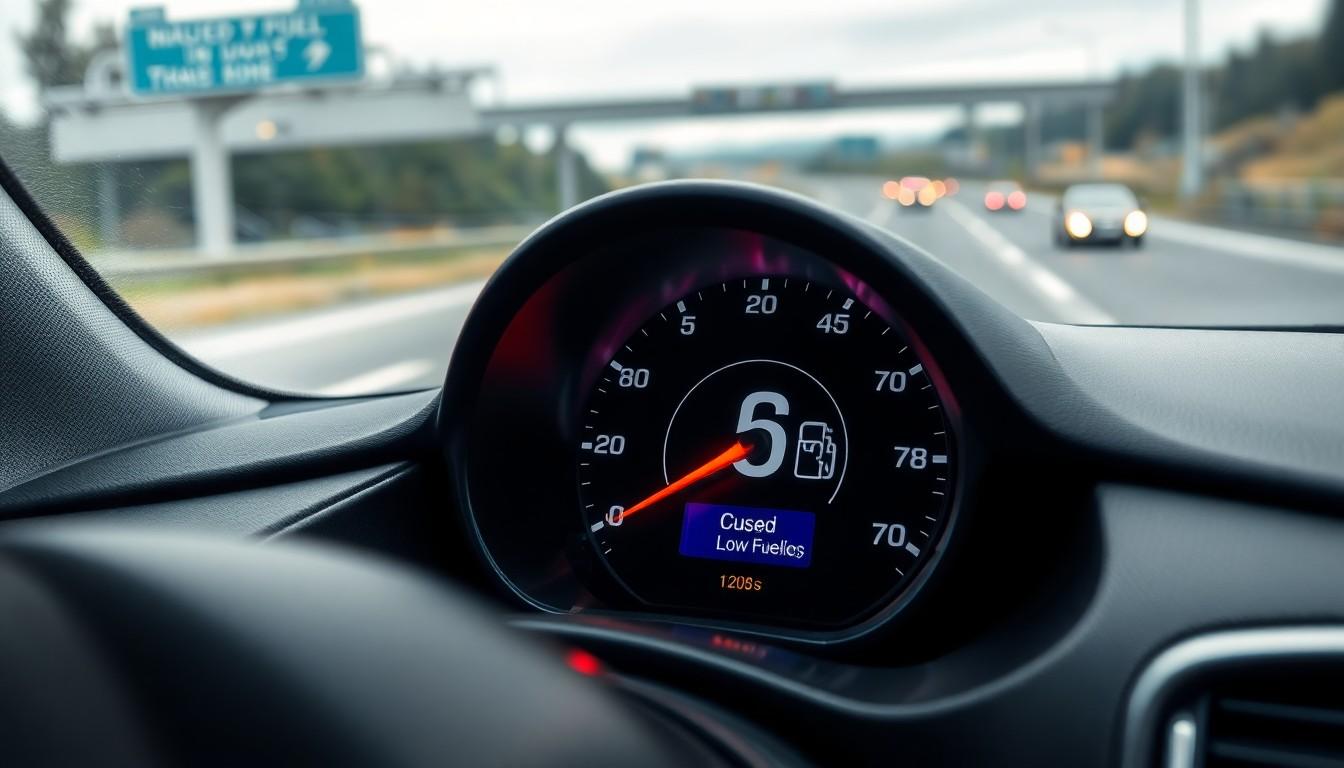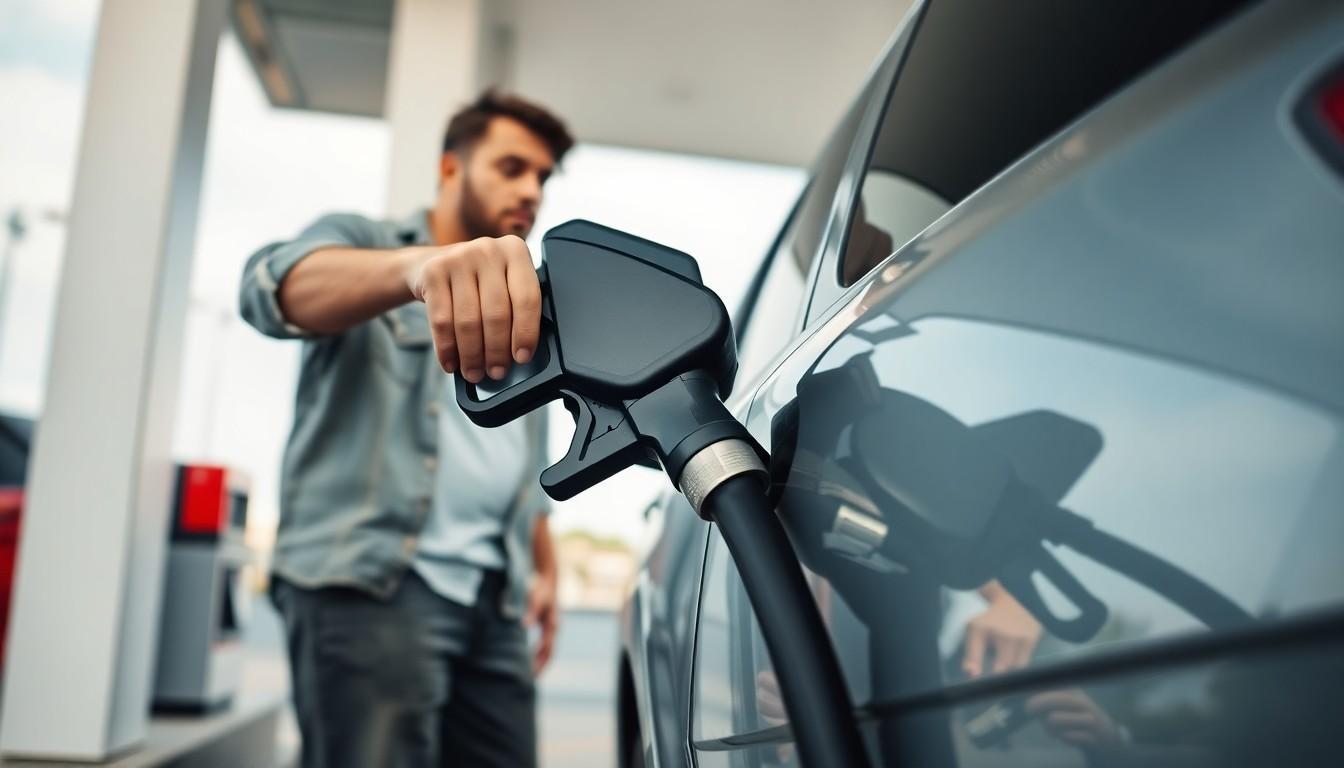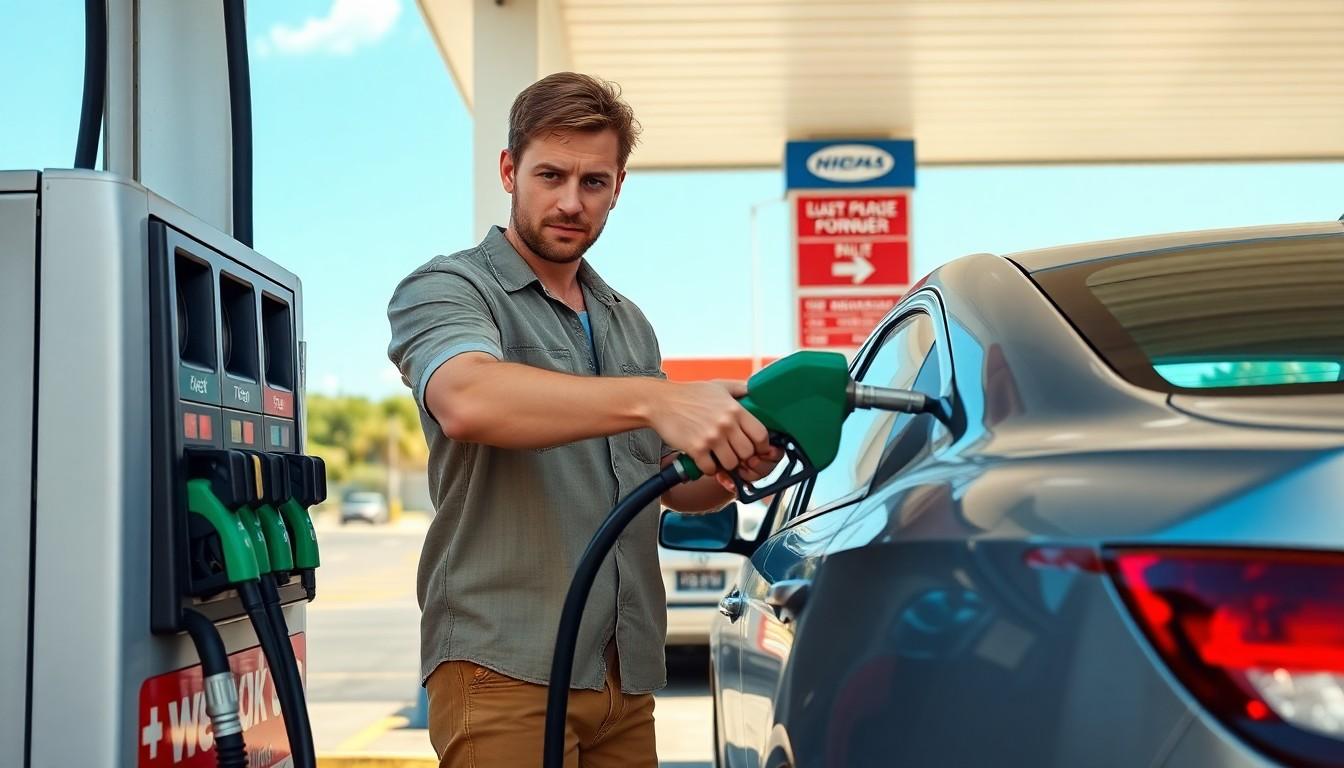We’ve all been there—that anxious moment when the fuel gauge edges toward empty and we wonder if we should stop for gas or push our luck a little further. It’s tempting to drive until that warning light comes on, especially when we’re in a hurry or trying to find cheaper fuel prices.
But is letting your gas tank run low actually harmful to your vehicle? Many of us have heard warnings about potential damage, while others insist it’s perfectly fine. We’ll explore what really happens when your tank approaches empty and whether those concerns about sediment, fuel pumps, and emergency preparedness are legitimate or just automotive myths.
Why People Let Their Gas Tanks Run Low
Busy schedules often lead drivers to postpone refueling until absolutely necessary. Many commuters find themselves rushing between work, errands, and family responsibilities with little time to spare for a gas station stop. Financial considerations also play a important role in this behavior, as drivers frequently wait for better fuel prices before filling up.
Time Constraints
Daily time pressures create situations where refueling seems like an inconvenient detour. Commuters racing to work meetings or parents hurrying to pick up children from activities typically postpone gas stops when they’re running late. Morning rush hour particularly influences this behavior, with many drivers choosing to deal with low fuel tomorrow rather than being late today. Some individuals develop habits of cutting it close, believing they’ll always have enough time to refuel before completely running empty.
Budget Considerations
Price sensitivity drives many consumers to strategically time their refueling. Drivers often pass gas stations when prices seem too high, hoping to find cheaper options along their route or waiting for weekly price drops. Some motorists specifically track price patterns, knowing certain days of the week typically offer lower prices in their area. Loyalty programs and discount days at exact stations also encourage people to stretch their remaining fuel until they can take advantage of these savings.
Overconfidence in Fuel Gauges
Misplaced trust in vehicle technology leads many drivers to push their fuel limits. Most modern vehicles display remaining mileage estimates, giving drivers a false sense of precision about exactly how far they can travel. Experienced drivers often develop personal “rules” about how far below empty they can safely drive based on previous close calls. This confidence becomes particularly problematic with unfamiliar vehicles or rental cars, where gauge accuracy may differ from what drivers are accustomed to experiencing.
Procrastination Habits
Simple procrastination accounts for a substantial portion of low-fuel driving incidents. Getting gas represents an errand that’s easy to postpone, especially when drivers are tired after work or during inclement weather. The minor inconvenience of stopping, paying, and pumping creates just enough friction that many people continuously promise themselves “I’ll do it tomorrow.” This behavior often becomes cyclical, with drivers repeatedly pushing the limits until they experience a close call that temporarily changes their habits.
The Real Risks of Driving on Empty

Driving with a nearly empty gas tank isn’t just a gamble on whether you’ll reach your destination—it’s a risk to your vehicle’s health and potentially your wallet. Let’s examine the genuine concerns associated with letting your fuel level drop too low.
Fuel Pump Damage Concerns
Fuel pumps depend on gasoline for proper functioning beyond just fuel delivery. When operating with minimal fuel, your pump loses vital cooling and lubrication that gasoline normally provides, causing it to overheat during operation. This overheating significantly reduces the pump’s lifespan and can lead to premature failure, leaving you stranded unexpectedly. Replacing a damaged fuel pump isn’t a simple fix—mechanics must often drain the entire gas tank to access the pump, resulting in repair costs that can reach up to $1,000. Regular driving on low fuel essentially forces your pump to work harder in less-than-ideal conditions, accelerating its deterioration while simultaneously increasing your risk of breakdown.
Sediment and Debris Problems
The bottom of your gas tank naturally collects contaminants, dirt, and sediment over time. Running on near-empty forces your fuel pump to draw from these lowest levels where debris concentration is highest. This debris travels through your fuel system, clogging filters designed to protect your engine from contaminants. Clogged filters restrict proper fuel flow, resulting in poor engine performance, decreased fuel efficiency, and frustrating misfires during acceleration. Over time, these particles can make their way into your engine, potentially damaging delicate components including expensive catalytic converters. The disrupted air-to-fuel ratio from inconsistent fuel delivery causes your engine to run “lean,” creating conditions for engine misfires and additional component stress that wouldn’t occur with adequate fuel levels.
Impact on Vehicle Performance and Efficiency

Running low on gas affects your vehicle’s performance and efficiency in important ways. The components of your fuel system rely on adequate fuel levels to function properly, and operating with a near-empty tank can lead to several mechanical issues.
Fuel Pump Damage
Fuel pumps depend on gasoline for cooling and lubrication. When gas levels drop too low, the pump can’t stay submerged in fuel as designed, causing it to overheat and potentially fail prematurely. The lack of proper cooling occurs because the pump begins drawing air instead of gasoline, removing the necessary lubrication that protects this critical component. Fuel pump replacements aren’t cheap – repairs can cost up to $1,000 when they fail due to consistently running on low fuel.
Engine Misfires and Hesitation
Low fuel levels disrupt the optimal air-to-fuel ratio in your engine, often creating a “lean” condition. Your vehicle responds to this imbalance with noticeable performance issues like misfires, hesitation during acceleration, and inconsistent power delivery. These symptoms aren’t just annoying – they can damage expensive components like your catalytic converter over time. The engine struggles to perform efficiently when it can’t access the proper amount of fuel needed for combustion.
Fuel Filter and Injector Issues
Sediment and debris naturally settle at the bottom of your gas tank. Driving with low fuel forces your fuel system to draw from these contaminated bottom layers, pulling impurities into your fuel lines, filters, and injectors. Clogged fuel filters reduce flow to the engine, while dirty injectors can’t properly atomize fuel. These issues compound to create poor performance, reduced power, and in extreme cases, complete engine failure requiring costly repairs.
Decreased Fuel Economy
Ironically, running on low fuel actually decreases your overall fuel economy. When components like fuel filters become clogged with sediment from the bottom of your tank, your engine works harder to compensate for reduced fuel flow. This extra strain increases fuel consumption, creating a counterproductive cycle. The long-term effects of a damaged fuel pump or contaminated fuel system gradually reduce efficiency, forcing your vehicle to use more gas to travel the same distance.
Cold Weather Complications
Cold temperatures intensify the problems associated with low fuel levels. In winter conditions, your engine and fuel system already face additional strain during startup and operation. Low fuel levels in cold weather can lead to more frequent misfires and pronounced hesitation as the system struggles to maintain proper fuel pressure. Also, temperature fluctuations increase the risk of condensation forming in your tank when it’s mostly empty, potentially introducing water into your fuel system and creating starting difficulties.
Financial Considerations of Running Low on Gas

Letting your gas tank get low impacts your wallet in both immediate and long-term ways. These financial implications extend beyond just the cost of fuel itself and can significantly affect your overall vehicle ownership expenses.
Emergency Refueling Costs
Running out of gas creates immediate financial strain through emergency service expenses. Roadside assistance or towing services typically charge premium rates when you’re stranded with an empty tank, often costing significantly more than regular fuel prices. These emergency services frequently include additional fees for transporting your vehicle to the nearest gas station. Many drivers don’t factor these unexpected costs into their fuel-saving calculations, making the perceived savings of postponing a fill-up eventually more expensive.
Long-Term Maintenance Expenses
Consistently running on low fuel leads to costly vehicle repairs that far outweigh any temporary savings. Fuel pumps require gasoline for cooling and lubrication, and when fuel levels drop too low, these components overheat and deteriorate faster, potentially resulting in complete failure. Replacing a damaged fuel pump often costs up to $1,000 since mechanics must drain and remove the entire gas tank during the repair process.
Sediment and debris naturally collect at the bottom of your tank, and driving with low fuel levels pulls these contaminants into your fuel system. These particles clog fuel filters and injectors, requiring more frequent replacements and cleanings that add to your maintenance budget. Engine performance suffers when running on minimal fuel, as the air-to-fuel ratio becomes disrupted, causing misfires that can damage expensive components like the catalytic converter.
Fuel quality deteriorates when gasoline sits in a near-empty tank for extended periods, creating additional engine problems that compound maintenance costs over time. The financial impact of these issues extends beyond the immediate repair costs, affecting your vehicle’s resale value and overall reliability.
Best Practices for Fuel Management

Maintaining proper fuel levels is essential for preserving your vehicle’s health and avoiding costly repairs. These practical strategies can help you manage your fuel effectively and prevent the risks associated with low gas levels.
Ideal Refueling Timing
Refilling your gas tank when it falls below a quarter full protects vital components and prevents potential damage. This quarter-tank rule serves as an effective guideline because it ensures your fuel pump remains properly cooled and lubricated by sufficient gasoline. Following this practice helps prevent debris and sediment from being drawn into the fuel system, as these contaminants typically settle at the bottom of the tank. Many automotive experts recommend this approach specifically to extend the life of your fuel pump and avoid repairs that can cost up to $1,000.
Using Fuel Gauges Effectively
Modern fuel gauges provide valuable information that helps you avoid running dangerously low on gas. Pay attention to warning lights and low fuel indicators, which are designed to give you ample time to find a gas station before reaching critically low levels. These warning systems typically activate when approximately 2-3 gallons remain in your tank, depending on your vehicle model. Familiarize yourself with your exact vehicle’s fuel gauge behavior and warning thresholds by checking your owner’s manual. Combining gauge readings with your vehicle’s estimated range display creates a more reliable picture of your actual fuel status, though it’s important to remember these estimates can vary based on driving conditions and habits.
Conclusion
Letting your gas tank run low isn’t just a minor inconvenience—it’s a risk to your vehicle’s health and your wallet. We’ve seen how this habit can damage fuel pumps lead to contaminant build-up and decrease overall performance particularly in cold weather.
The quarter-tank rule exists for good reason. By maintaining adequate fuel levels you’re protecting vital components avoiding emergency refueling costs and preventing long-term damage that far outweighs any perceived savings from postponing a fill-up.
Smart fuel management is an easy way to extend your vehicle’s lifespan and avoid unnecessary expenses. Next time your gauge approaches the quarter mark take it as a firm reminder to refuel. Your car and your future self will thank you.
Frequently Asked Questions
Is it bad to drive with a low fuel tank?
Yes, driving with a low fuel tank can harm your vehicle. When fuel levels drop too low, the fuel pump may overheat without proper cooling and lubrication from the gasoline. Additionally, sediment at the bottom of your tank can get pulled into the fuel system, potentially clogging filters and damaging engine components. Beyond vehicle damage, you also risk being stranded if you miscalculate your remaining range.
How does low fuel affect my car’s performance?
Low fuel levels can significantly impact performance. Your vehicle may experience engine misfires, hesitation during acceleration, and reduced fuel economy as the fuel pump struggles to maintain proper pressure. Sediment from the tank bottom can clog fuel filters and injectors, leading to rough idling and poor combustion. In cold weather, these issues worsen as fuel flows less efficiently and moisture risks freezing in the system.
When should I refill my gas tank?
Follow the quarter-tank rule: refill when your gauge reaches the ¼ mark. This practice ensures your fuel pump remains properly cooled and lubricated while preventing sediment at the bottom of the tank from being drawn into your fuel system. Don’t wait for the low fuel warning light, which typically activates when only 2-3 gallons remain in your tank.
How much does it cost to repair a damaged fuel pump?
Replacing a damaged fuel pump typically costs between $400-$1,000 depending on your vehicle make and model. This expense is significantly higher than any potential savings from postponing refueling. Regular maintenance by keeping adequate fuel in your tank is much more economical than dealing with premature component failures caused by consistently running on low fuel.
Why do people often drive with low fuel?
People drive with low fuel for several reasons: busy schedules make refueling seem inconvenient, financial concerns lead to waiting for better gas prices, time constraints during rush hours discourage stops, overconfidence in fuel gauge estimates creates false security, and simple procrastination habits. While these reasons seem valid in the moment, they often lead to risky situations that can damage vehicles and cause stress.
Can running low on gas damage other parts besides the fuel pump?
Yes, beyond the fuel pump, running low on gas can damage fuel filters, fuel injectors, and catalytic converters. When sediment from the tank bottom enters your fuel system, it can cause clogs and contamination throughout multiple components. This contamination leads to poor combustion, reduced efficiency, and potentially expensive repairs to restore proper engine function.
Does the weather affect how low I can run my fuel tank?
Absolutely. Cold weather significantly increases the risks of running on low fuel. Gasoline flows less efficiently in cold temperatures, and condensation can form in a partially empty tank, introducing water into your fuel system. This moisture can freeze in fuel lines, making starting difficult or impossible. Always maintain higher fuel levels during winter months to prevent these cold-weather complications.
What should I do if my low fuel light comes on?
When your low fuel light illuminates, find a gas station within the next 30-50 miles (depending on your vehicle). Don’t panic, but don’t delay refueling either. Use navigation apps to locate the nearest station rather than driving aimlessly. If you’re in an unfamiliar area, consider getting enough gas to reach a station with better prices rather than risking running completely empty.











